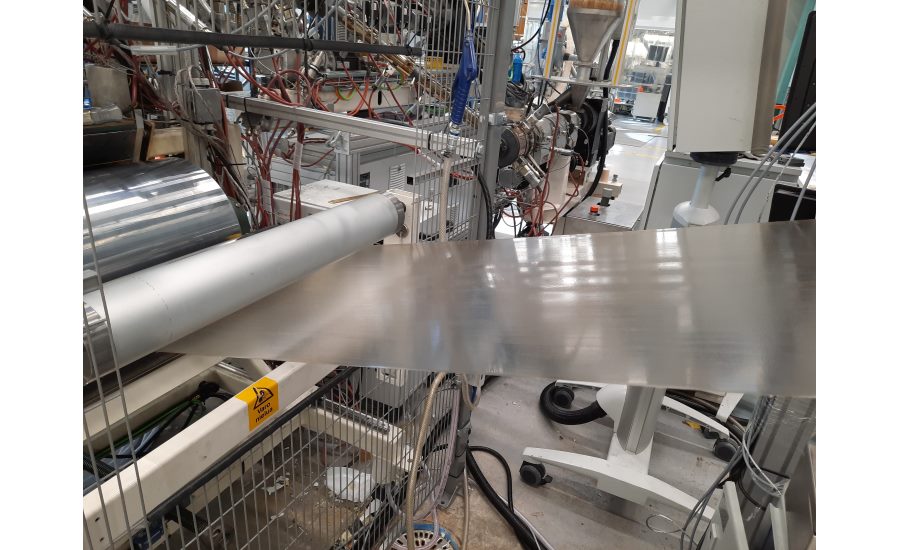A method developed by VTT enables the production of Thermocell plastic, a thermoplastic substance, out of cellulose and bio-based fatty acids, which are suitable for applications such as injection molding, coating of paper and paperboard and 3D printing. Cellulose is the structural ingredient in plants which, just like plastics, is composed of large polymer molecules. When cellulose is extracted from wood, it does not compete with food production, as many other biomaterials do. In addition, efficient production methods have already been established in the production of cellulose. However, cellulose as such has lacked one important feature of packaging plastic: thermoplasticity.
“We have moved from the laboratory to bigger machinery while at the same time improving the quality of the film. Our goal is to show that Thermocell film can be produced on an industrial scale using the same equipment that is used for traditional plastic films, with features that meet the needs of the food industry. For this reason, Arla Foods, Paulig and Wipak are also taking part in the research,” says Jarmo Ropponen, the research team leader at VTT.
“The focus in our development of packaging in the coming years is on recyclability. The development of renewable, biobased materials supports our long-term goals. The development of Thermocell still requires work to ensure that it can be used with machinery, and that it has long shelf life, among other features. We wanted to support material development so that the requirements of our products will be considered already in the early stages of development,” says Kati Randell of Paulig.
Thermocell has already been shown to provide good protection against water vapor, and none of its components migrate into the food. Thermocell film can also be heat sealed using the manufacturers’ standard equipment.
A significant achievement in the development of Thermocell is the smaller thickness of the film. With advances in production machinery, the film has become more even, and its thickness is already down to 100 micrometers. If the material is to compete against thin plastic films, the thickness needs to be reduced further. The aim is also to orient the film and thereby improve its strength and its protective qualities.
“Feedback from partner companies has also allowed us to see other features that are important on the market. The friction characteristics of the film are one example of this, so that it could be more easily used on industrial packaging lines,” Ropponen says.
The recyclability of Thermocell has proven to be nearly equal to that of the most common thermoplastics. It can be melted down and extruded again at least five times with no significant deterioration of its features. Recycling still requires that it should be sorted separately.
Visit www.wipak.com for more information.

